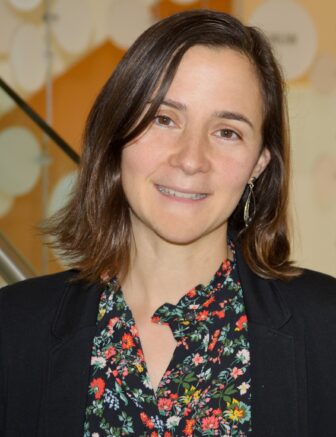ASL-accessible PBS Kids programs put interpreters inside story frame

PBS Kids
A scene from an ASL-interpreted episode of "Alma's Way."
A research-backed initiative to incorporate American Sign Language into PBS Kids programs has introduced a new layer of accessibility to six series for kids ages 2–8.
ASL interpreters appear within the screen and frame of action of 10 episodes for each participating series, including Arthur, Work It Out Wombats!, Pinkalicious & Peterrific, Daniel Tiger’s Neighborhood, Donkey Hodie and Alma’s Way. The episodes, adapted with series producers at GBH Kids and Fred Rogers Productions, are available on PBS Kids digital streaming platforms.

The initiative responds to the need for accessible media for children who are deaf or hard of hearing and “just emerging in their literacy skills,” said Jen Rodriguez, director of research & inclusive design for PBS Kids. Even children who are able to read with fluency may find it difficult to follow captions because of the pacing or placement of text on the screen, she added.
“We knew we needed to do more than captions for children who are deaf and hard of hearing to include them,” Rodriguez said.
PBS Kids began looking for ways to integrate ASL into its programming in 2021. It partnered with Bridge Multimedia, which specializes in producing ASL-accessible media, events and workplace applications. Bridge Multimedia and PBS Kids had previously partnered to develop audio descriptions and accessible games for children who were blind, according to Rodriguez.
The Department of Education provided partial funding for the project, which included focus group research exploring how to make ASL interpretation more accessible to and inclusive of the Deaf community. Led by Wendy Sapp, chief research officer at Bridge Multimedia, the focus groups of 12–15 participants included deaf adults, deaf children who primarily rely on ASL, hard-of-hearing children and hearing children of deaf adults.
Parity for hearing and deaf culture
PBS Kids and Bridge Multimedia drew two major conclusions from the research: the need for easy-to-find ASL settings within video players and for more integration of ASL interpreters within the content of each show.
With the typical placement of ASL interpreters in a corner of the screen, “there is this sense in the Deaf community that you’re being relegated to the corner” as an add-on feature, not a primary feature, of the program, Rodriguez said. “When you are showing the ASL in a box separate from the content, that’s not … conveying the parity of hearing and Deaf culture.”

To improve ASL accessibility for PBS Kids programs, one solution was to change the placement of the interpreter based on proximity to the character who is speaking. Interpreters also wear props to look more like the characters they represent.
Children also preferred seeing the ASL interpreter appearing next to the characters on screen and fairly large within the frame, Rodriguez said.
After testing the location, opacity and size of the interpreter box, the research and design team decided they needed a “picture-in-picture solution with the interpreter immersed in the space of … with the characters,” she said.
Another change that will improve ASL inclusion and accessibility involves adding an ASL character to PBS Kids’ branding materials. Animations of many PBS Kids characters show a fist instead of a fully drawn hand, but this character’s hand will show five digits. Since facial expressions are so important in ASL, their eyebrows will be more prominent. The character will also have a name sign to be representative of the Deaf community.
Rodriguez said that Fred Rogers Productions produced half of the ASL interpretation content released so far. Described and Captioned Media Program worked with Fred Rogers Production to provide ASL translation and to cast deaf signers.
Corrections: An earlier version of this article incorrectly said that the ASL has been incorporated into PBS Kids series for preschool children. The series are for kids ages 2–8. The article also incorectly said Jen Rodriguez is director of research & inclusive design for PBS. She holds that position with PBS Kids.







